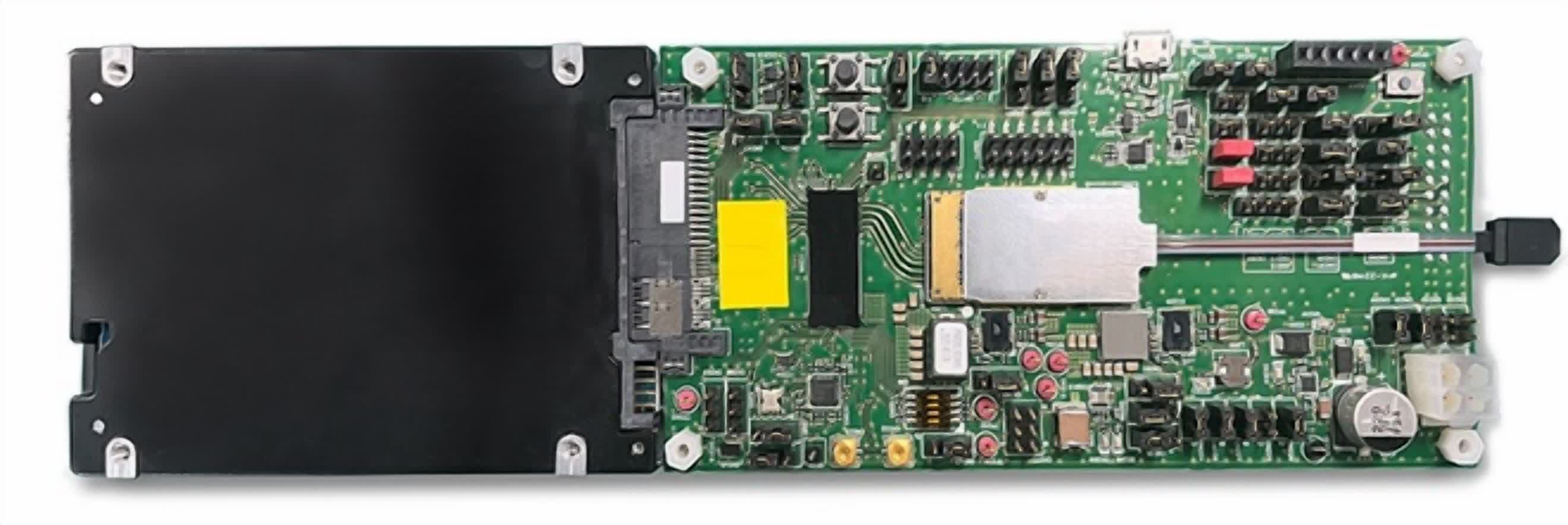Kioxia new optical PCIe 5.0 SSDs can do 40-meter cable lengths with no performance loss
What just happened? Kioxia has completed the development of its next-gen optical PCIe 5.0 SSDs, which can operate up to 40 meters from the host system without losing throughput. The breakthrough comes from replacing traditional copper connections with optical communication, allowing the SSD to link directly to a server or CPU over long distances.
The optical link supports much longer cable lengths and preserves the full multi-gigabyte-per-second speeds of PCIe 5.0. Kioxia has confirmed successful PCIe 5.0 32GT/s x4 lane operation over the optical interface, doubling the bandwidth of its previous prototype and marking a significant milestone for the project.
The company developed these prototypes in collaboration with component makers AIOCore and Kyocera as part of a larger initiative to create more energy-efficient "green" data centers. This initiative, backed by Japan's NEDO under the Green Innovation Fund, aims to cut data center energy consumption by 40% or more. The project leverages Kyocera's OPTINITY optical-electrical module and AIOCore's photonics-electronics convergence devices, integrated into Kioxia's prototype PCIe 4.0 SSD platform.
The long-distance capabilities of these optical SSDs could be a game-changer for modern data centers packed with hot, power-hungry hardware. An optical SSD cluster allows the drives to be relocated to a separate cool room up to 40 meters from the CPU systems they serve. By optimizing thermal management, this setup also reduces the need for heavy-duty cooling systems near performance-critical CPUs.
Optical interfacing offers additional benefits as well. Their slimmer cabling and connector designs in high-performance or data center applications enable denser packaging and more compact layouts. Compared to traditional electrical designs, the smaller connectors also make way for smaller form-factor drives. Furthermore, optical systems produce less heat and generate minimal electromagnetic interference due to the lack of electrical resistance and conductive signaling.
As Tom's Hardware suggests, the only catch is getting existing data centers to support optical storage devices. However, Kioxia says it's working with AIOCore and Kyocera to improve compatibility with platforms targeting demanding workloads. Proof-of-concept tests are already underway to help pave the path to future adoption. Kioxia is keeping the launch window for the SSDs under wraps for now.
// Related Stories


